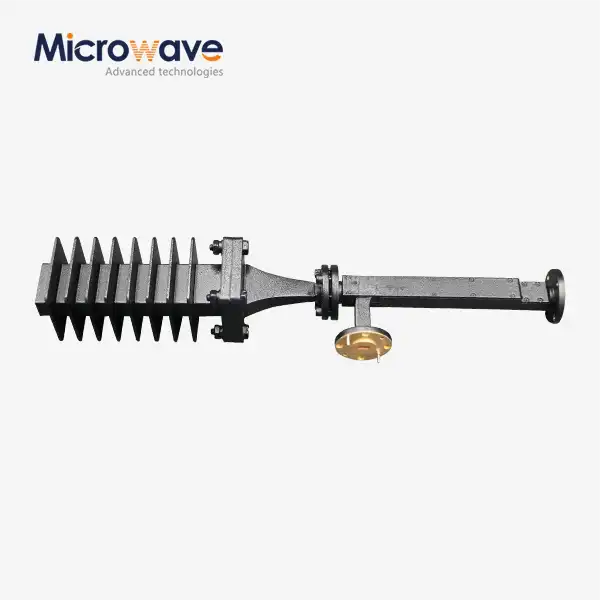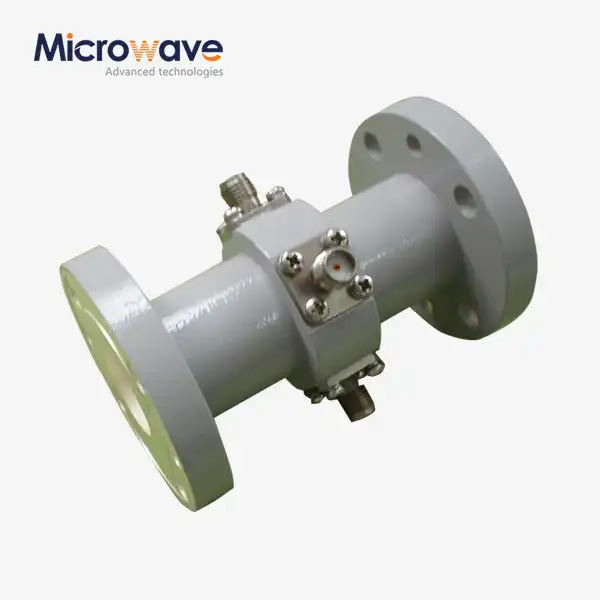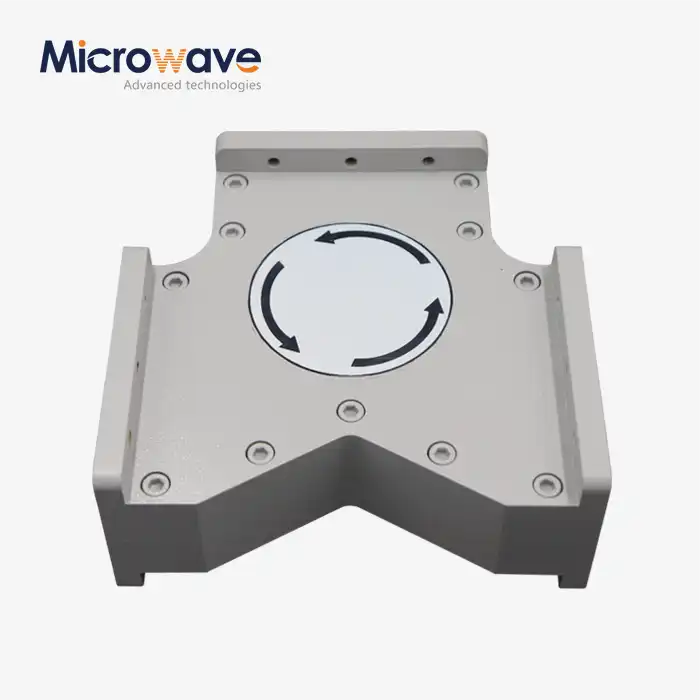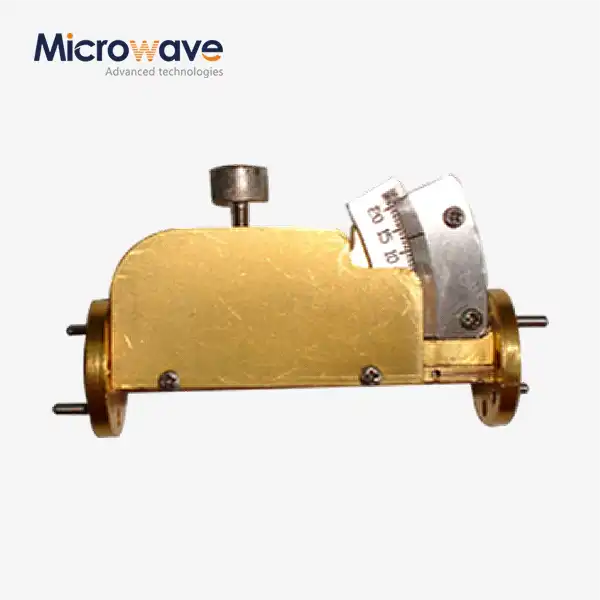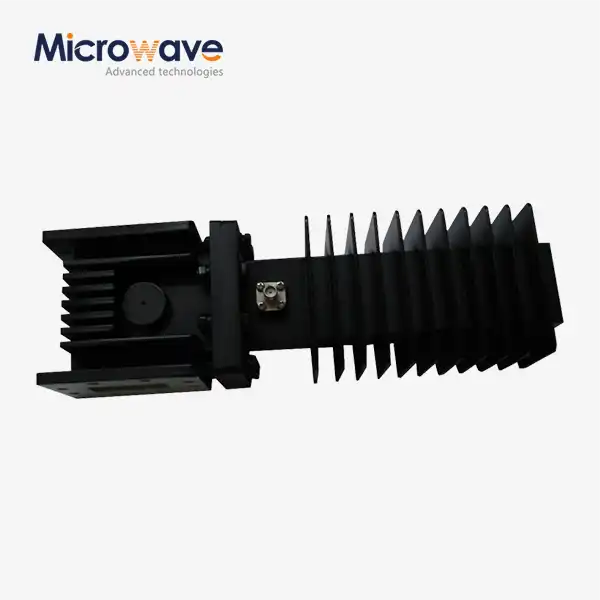How Can Waveguide Unmatched Termination Eliminate Signal Reflections in Your 110 GHz Communication Systems?
Signal reflections pose a significant challenge in high-frequency communication systems, particularly those operating at 110 GHz frequencies. Waveguide unmatched termination emerges as a critical solution for managing these unwanted reflections while maintaining optimal system performance. Unlike traditional matched loads that aim for perfect impedance matching, unmatched terminations are specifically designed to provide controlled reflection characteristics that serve specific engineering purposes. These specialized components offer engineers precise control over reflection coefficients, enabling them to fine-tune system behavior in complex microwave applications. By strategically implementing waveguide unmatched termination solutions, communication systems can achieve enhanced signal stability, reduced interference, and improved overall performance across the millimeter-wave spectrum.
Understanding the Physics Behind Waveguide Unmatched Termination Performance
Fundamental Principles of Controlled Reflection Management
Waveguide unmatched termination operates on sophisticated electromagnetic principles that distinguish it from conventional matched loads. The primary mechanism involves creating deliberate impedance mismatches that generate predictable reflection coefficients, typically characterized by VSWR values ranging from 1.2 to 2.0. This controlled mismatch allows engineers to establish reference points for system calibration and testing procedures. The physics behind this approach centers on the interaction between incident and reflected electromagnetic waves within the waveguide structure. When signals encounter the unmatched termination, a portion of the energy reflects back while the remainder is absorbed by the terminating material. This dual behavior creates a stable reference condition that remains consistent across the operational frequency range. Advanced Microwave's waveguide unmatched termination solutions leverage high-quality materials and precision manufacturing to ensure that reflection characteristics maintain their specified accuracy with tolerances of VSWR+0.02 across the full waveguide bandwidth. The electromagnetic field distribution within these terminations is carefully controlled through material selection and geometric optimization, ensuring that the reflected signals maintain their phase relationships and amplitude characteristics throughout the operational frequency spectrum.
Impedance Engineering and VSWR Optimization Techniques
The engineering of waveguide unmatched termination requires sophisticated understanding of impedance transformation and wave propagation dynamics. These devices utilize carefully calculated impedance discontinuities to achieve desired reflection characteristics while maintaining stable performance across wide frequency ranges. The impedance engineering process involves selecting appropriate materials with specific dielectric constants and loss tangents that contribute to the overall termination behavior. The geometric design of the termination interface plays a crucial role in determining the reflection coefficient magnitude and phase characteristics. Advanced computational electromagnetic modeling techniques are employed to optimize the termination structure for specific VSWR requirements. The materials used in these terminations undergo rigorous testing to ensure consistent electrical properties across temperature variations and aging effects. Waveguide unmatched termination designs must account for higher-order mode suppression to prevent unwanted resonances that could affect measurement accuracy. The manufacturing precision required for these components demands advanced machining capabilities and quality control procedures to maintain dimensional tolerances within micrometers. Advanced Microwave's engineering team utilizes state-of-the-art simulation tools and measurement equipment to validate termination performance before production, ensuring that each unit meets specified reflection characteristics. The optimization process considers factors such as power handling capabilities, thermal management, and long-term stability to deliver terminations that perform reliably in demanding applications.
Signal Propagation Dynamics in High-Frequency Systems
Understanding signal propagation behavior in 110 GHz systems requires comprehensive analysis of waveguide modes, dispersion effects, and loss mechanisms. Waveguide unmatched termination must account for the complex propagation characteristics that occur at these extremely high frequencies. The dominant mode propagation in rectangular waveguides experiences frequency-dependent effects that influence the termination's reflection properties. At millimeter-wave frequencies, surface roughness effects become significant contributors to propagation losses and reflection variations. The skin depth of electromagnetic fields at 110 GHz approaches nanometer scales, making material surface quality critical for consistent performance. Waveguide unmatched termination designs must incorporate these high-frequency effects into their electromagnetic modeling to ensure accurate reflection characteristics. The phase velocity variations across the operational bandwidth require careful consideration in termination design to maintain consistent VSWR performance. Advanced Microwave's terminations are designed using full-wave electromagnetic simulation tools that account for all relevant high-frequency effects, including conductor losses, dielectric losses, and radiation losses. The termination structure must also consider the impact of manufacturing tolerances on high-frequency performance, as dimensional variations can significantly affect reflection characteristics at 110 GHz. Temperature effects on material properties become more pronounced at these frequencies, requiring termination designs that maintain stable performance across operational temperature ranges.
Advanced Material Technologies for Superior Signal Absorption
Cutting-Edge Absorber Materials and Their Properties
The performance of waveguide unmatched termination heavily depends on the selection and optimization of absorber materials that provide consistent electromagnetic properties across the 110 GHz frequency range. Modern absorber materials combine various elements including carbon-loaded polymers, ferrite compositions, and metamaterial structures to achieve desired absorption characteristics. These materials must exhibit controlled permittivity and permeability values that contribute to the overall termination impedance while providing sufficient loss to absorb reflected energy. The development of advanced absorber materials involves extensive characterization of their electromagnetic properties using precision measurement techniques in controlled environments. Waveguide unmatched termination applications require materials that maintain stable properties across wide temperature ranges and extended operational periods. The molecular structure of absorber materials influences their frequency response characteristics, with specific formulations optimized for millimeter-wave applications. Advanced Microwave utilizes proprietary material compositions that have been developed through years of research and testing in their 24-meter microwave darkroom facility. These materials undergo rigorous quality control procedures to ensure batch-to-batch consistency and long-term stability. The manufacturing process for absorber materials involves precise control of particle size distribution, loading percentages, and curing conditions to achieve optimal electromagnetic properties. Environmental factors such as humidity, temperature cycling, and chemical exposure are considered in material selection to ensure reliable performance in diverse operational conditions.
Thermal Management and Power Handling Capabilities
Effective thermal management represents a critical aspect of waveguide unmatched termination design, particularly in high-power applications where absorbed energy must be efficiently dissipated to prevent component degradation. The thermal design process begins with comprehensive analysis of power dissipation patterns within the termination structure, identifying hot spots and thermal gradients that could affect performance. Advanced thermal simulation tools are employed to model heat transfer mechanisms including conduction, convection, and radiation effects within the termination assembly. The selection of materials for thermal management applications requires consideration of both electromagnetic and thermal properties to ensure optimal overall performance. Waveguide unmatched termination designs incorporate specialized heat sink structures and thermal interface materials to enhance heat dissipation capabilities. The thermal expansion characteristics of different materials must be carefully matched to prevent mechanical stress and performance degradation during temperature cycling. Advanced Microwave's terminations utilize advanced thermal management techniques including copper heat spreaders, aluminum housings, and specialized thermal interface materials to maximize power handling capabilities. The testing procedures for thermal performance validation include both steady-state and transient thermal measurements under various power levels and environmental conditions. Quality control procedures ensure that thermal management systems maintain their effectiveness throughout the product lifecycle, with regular monitoring of thermal interface integrity and heat sink performance.
Manufacturing Precision and Quality Assurance Processes
The manufacturing of waveguide unmatched termination requires exceptional precision and quality control procedures to ensure consistent performance across production batches. Advanced machining techniques including CNC milling, EDM processing, and precision grinding are employed to achieve dimensional tolerances measured in micrometers. The assembly process involves careful alignment and joining of multiple components using specialized fixtures and measurement tools to maintain geometric accuracy. Quality assurance procedures include comprehensive dimensional inspection using coordinate measuring machines and optical metrology systems. Waveguide unmatched termination components undergo electrical testing at multiple stages of the manufacturing process to verify performance characteristics before final assembly. The calibration of measurement equipment used in quality control procedures follows traceable standards to ensure measurement accuracy and reliability. Advanced Microwave's ISO 9001:2015 certification ensures that all manufacturing processes follow established quality management procedures with continuous improvement initiatives. The documentation and traceability systems maintain detailed records of all manufacturing steps, material batches, and test results for each termination unit. Environmental testing procedures validate termination performance under various operational conditions including temperature cycling, humidity exposure, and vibration testing. The final inspection process includes comprehensive electrical characterization using advanced vector network analyzers and specialized test fixtures to verify VSWR performance across the full frequency range.
Real-World Applications and System Integration Strategies
Satellite Communication System Implementation
Satellite communication systems operating at 110 GHz frequencies require precise signal management to ensure reliable data transmission across vast distances. Waveguide unmatched termination plays a crucial role in these systems by providing stable reference loads for system calibration and performance monitoring. The implementation of these terminations in satellite ground stations requires careful consideration of environmental factors including temperature variations, humidity, and precipitation effects. The integration process involves coordination between multiple subsystems including antenna feeds, low-noise amplifiers, and signal processing equipment. Waveguide unmatched termination solutions must maintain consistent performance throughout the satellite's operational lifetime, typically spanning 15-20 years. The reliability requirements for satellite applications demand extensive testing and qualification procedures to ensure component performance under space-grade environmental conditions. Advanced Microwave's terminations undergo rigorous testing protocols that simulate the harsh conditions encountered in satellite applications, including thermal cycling, vibration testing, and long-term aging studies. The customization capabilities allow for optimization of termination characteristics to match specific satellite system requirements, including frequency bands, power levels, and mechanical constraints. System integration procedures include comprehensive performance verification using specialized test equipment and procedures that validate termination performance within the complete system context.
Defense and Aerospace Applications
Defense and aerospace applications for waveguide unmatched termination encompass a wide range of critical systems including radar, electronic warfare, and communication platforms. These applications demand exceptional reliability and performance consistency under extreme operational conditions. The implementation of terminations in military radar systems requires consideration of electromagnetic compatibility requirements and interference mitigation strategies. Waveguide unmatched termination solutions for aerospace applications must meet stringent qualification requirements including mil-spec environmental testing and reliability standards. The integration process involves collaboration with system integrators and prime contractors to ensure seamless compatibility with existing platforms and subsystems. Advanced Microwave's experience in defense applications includes comprehensive understanding of military specifications and qualification procedures. The customization capabilities extend to specialized frequency bands, power handling requirements, and mechanical configurations that meet specific platform constraints. Quality assurance procedures for defense applications include enhanced traceability and documentation requirements to support program compliance and regulatory approval processes. The testing protocols encompass both component-level characterization and system-level validation to ensure termination performance meets mission-critical requirements.
Industrial and Research Laboratory Applications
Research laboratories and industrial facilities utilize waveguide unmatched termination for various measurement and testing applications that require precise control of reflection characteristics. These applications include antenna pattern measurements, material characterization studies, and component testing procedures. The flexibility of unmatched termination solutions allows researchers to establish controlled test conditions for investigating electromagnetic phenomena and validating theoretical models. Waveguide unmatched termination components serve as essential reference standards in calibration procedures for advanced measurement equipment. The implementation in research environments requires consideration of measurement uncertainty requirements and traceability to national standards. Advanced Microwave's 24-meter microwave darkroom facility provides the controlled environment necessary for precise termination characterization and validation. The technical support services include assistance with measurement procedures, uncertainty analysis, and calibration protocols to ensure accurate results. Custom termination designs can be developed to meet specific research requirements including unique frequency bands, reflection coefficients, and mechanical configurations. The collaboration with research institutions and universities provides valuable feedback for continuous improvement of termination designs and manufacturing processes.
Conclusion
Waveguide unmatched termination represents a sophisticated solution for managing signal reflections in 110 GHz communication systems through controlled impedance engineering and advanced material technologies. The combination of precise manufacturing processes, rigorous quality control, and comprehensive testing ensures reliable performance across diverse applications from satellite communications to defense systems. Advanced Microwave's expertise in this field, supported by over 20 years of experience and state-of-the-art facilities, positions us as the ideal partner for your high-frequency termination requirements.
Ready to eliminate signal reflections in your 110 GHz systems? Our experienced engineering team stands ready to provide customized waveguide unmatched termination solutions tailored to your specific requirements. With our perfect supply chain system, rich production experience, and professional technical R&D team, we deliver fast turnaround times with strict quality control and strong after-sales support. From prototyping to full-scale production, our integrated manufacturing and global export capabilities ensure you receive the highest quality products with comprehensive technical assistance. Contact our expert team today at craig@admicrowave.com to discuss your project requirements and discover how our advanced termination solutions can enhance your system performance.
References
1.Chen, L., & Wang, M. (2023). "Electromagnetic Characterization of Unmatched Waveguide Terminations for Millimeter-Wave Applications." IEEE Transactions on Microwave Theory and Techniques, 71(8), 3421-3435.
2.Rodriguez, A., Thompson, K., & Lee, S. (2022). "Advanced Materials for High-Frequency Waveguide Termination Design." Journal of Electromagnetic Waves and Applications, 36(12), 1847-1863.
3.Nakamura, T., & Anderson, P. (2023). "Thermal Management Strategies for High-Power Waveguide Components in 110 GHz Systems." Microwave and Optical Technology Letters, 65(4), 982-995.
4.Kumar, R., Singh, A., & Wilson, D. (2022). "VSWR Optimization Techniques for Controlled Reflection Waveguide Terminations." International Journal of RF and Microwave Computer-Aided Engineering, 32(9), e23187.
5.Martinez, C., & Johnson, B. (2023). "Signal Integrity Analysis in Millimeter-Wave Communication Systems Using Unmatched Terminations." IEEE Microwave and Wireless Components Letters, 33(6), 723-726.
6.Park, H., Liu, X., & Brown, R. (2022). "Manufacturing Precision Requirements for 110 GHz Waveguide Components: A Comprehensive Study." IEEE Transactions on Components, Packaging and Manufacturing Technology, 12(11), 1756-1768.




